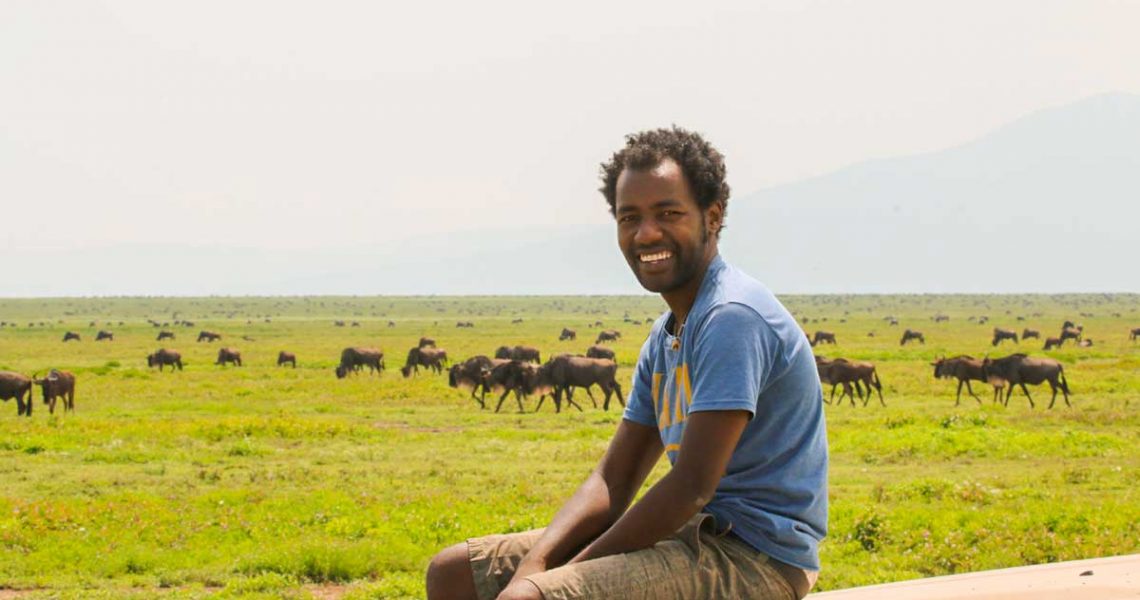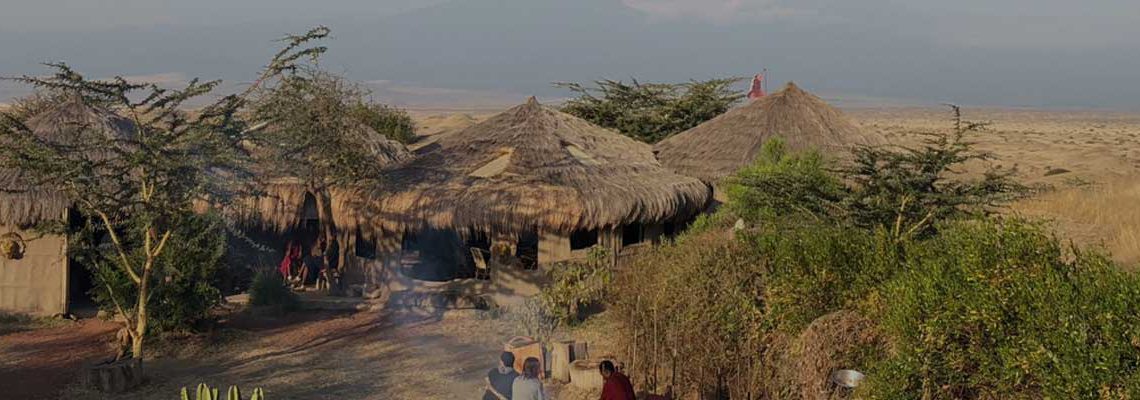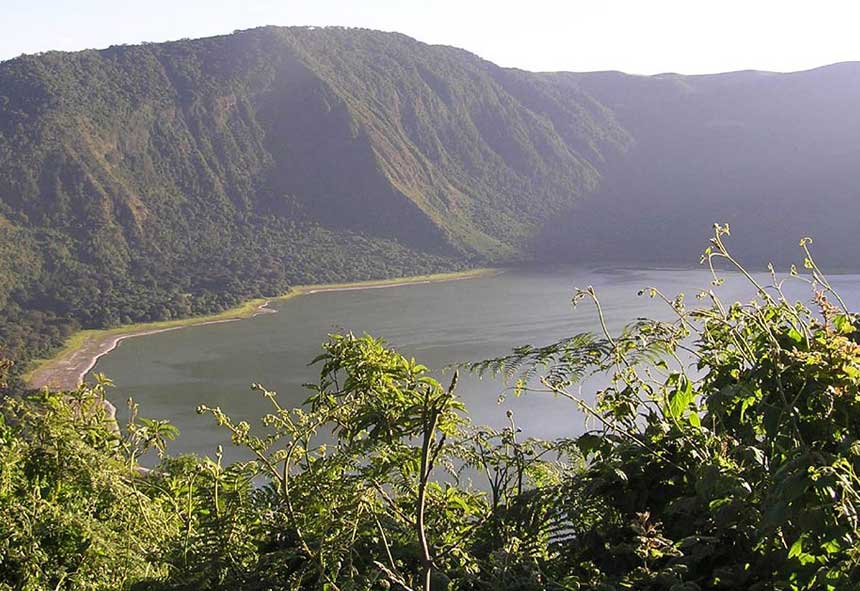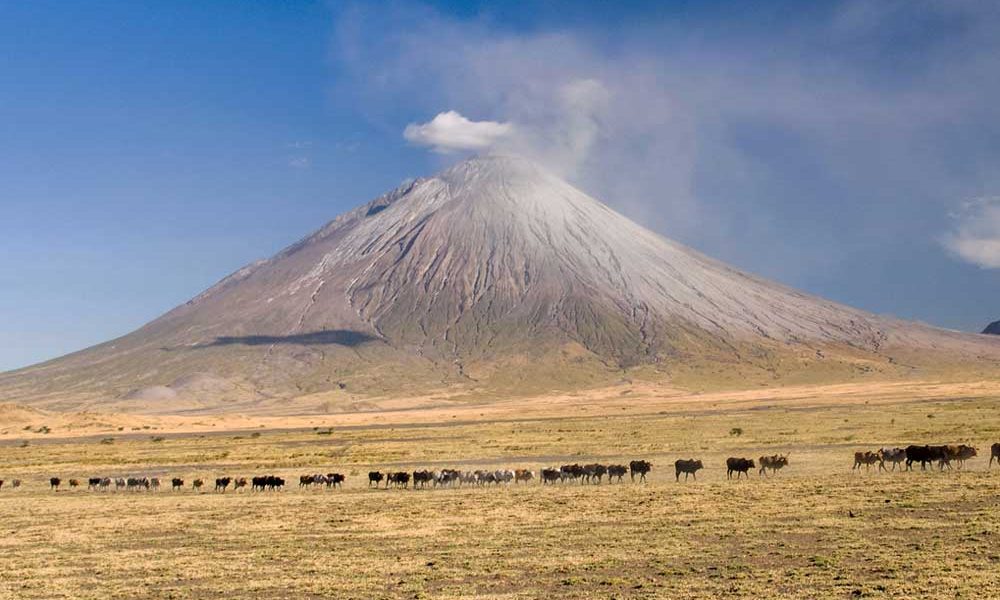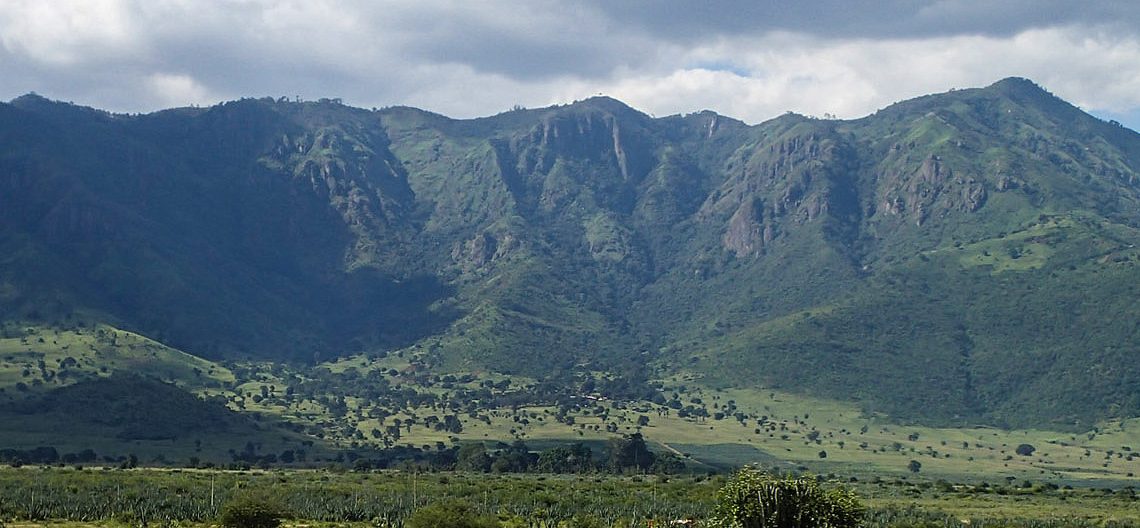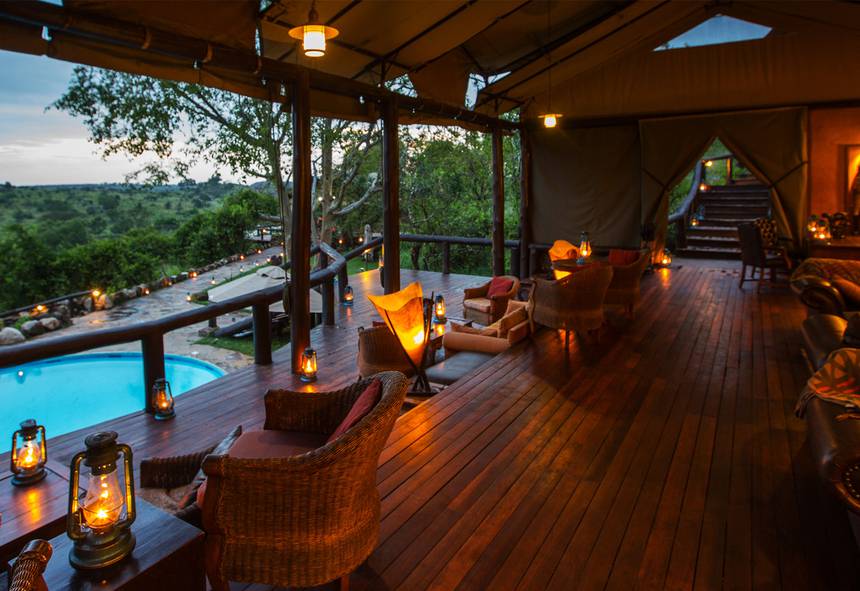About us – Plains of Africa Adventure
Plains of Africa Adventure is a tour company based in Tanzania but operates in all the safari and tour destinations around Tanzania. Our main objective as a tour company is to showcase the beauties which East Africa has to offer.
Ngorongoro Crater Highlights
It was created as a result of an imploded volcano, establishing a unique caldera that stretches 20km in diameter, is home to its very own eco-system and is teeming with indigenous wildlife.
Located right near the famous Serengeti National Park, it is ideally located for visitors to explore the variety of plant and animal life living within the crater walls.
This is one of the most magnificent tourist destinations in Africa unparalleled in its distinguished scenic beauty, wildlife and atmosphere. The Ngorongoro Conservation Area (NCA) is an area situated 180km west of Arusha in the Crater Highlands region of Tanzania.
Land in the conservation area is multi-use, it is unique in Tanzania as the only conservation area, providing protection status for wildlife whilst allowing human habitation. The NCA is usually visited on the return journey from the Serengeti to Arusha. Stunning views and unique landscape are a certainty when visiting this spectacular region
TESTIMONIALS
Our Customer Stories
Thank you Tx Safari & Adventures and Exaud for making my safari the most memorable it could be especial taking the 6 students !!! It was Serendipity how it all worked out. Hope to be back next year and I’ll recommend you and Tx company to every one in NOVA SCOTIA.
Our safari was excellent. We had seriously the best safari ever. Saw everything within Tarangire, and the other parks were just icing on the cake. Even saw the python and a fresh kill in Ngorongoro crater,
We did a 8 day trip with our family 4 adults and 2 kids. I started planning late but the response was excellent and put together several itineraries and was very responsive, well informed and helpful.
READY TO GO ON SAFARI?
Where to go icon Tell us where you would like to visit.
Tailored solutions icon We will work on some tailored solutions.
Safari icon It’s time for your safari! Bon Voyage!
The Empakaai Crater
From the crater rim you have a fantastic view in the craters’ green paradise. The caldera is about 6 km wide and nearly half of its floor is covered by a lake. The water in the lake is alkaline and the depth of the lake is about 85m, unusually deep for soda lakes in East Africa.
The steep walls of the caldera, clothed in forest, rise in some places to almost 300m above the floor.
The views along the trail downwards are spectacular at every point. All along you can enjoy the changing views of Empakaai itself. In addition, from the northern and eastern side you can look out to the dramatic cone of the still active volcano, Oldoinyo Lengai. If the day is clear, you can look beyond Lengai to the Great Rift Valley and Lake Natron. Sometimes you can even see the distant snows of Kilimanjaro far on the eastern side of the Valley.
On your way downwards to the lake you might see buffaloes or bushbucks, blue monkeys, many birds (like sunbirds and turacos).
At the shore of the lake are often waterbucks and elands. It is a joy to walk around the lake shore, experiencing the serenity and quiet beauty of this wild spot.
The nights at the Craters can be quiet cold (both craters are at 3500 m), especially in June, July and August.
READY TO GO ON SAFARI?
Where to go icon Tell us where you would like to visit.
Tailored solutions icon We will work on some tailored solutions.
Safari icon It’s time for your safari! Bon Voyage!
The Olmoti Crater
Olmoti Craters’s floor is shallow and covered with tussocks of grass. Besides the Maasai and their livestock you can sometimes see eland, buffalo and reedbuck.
The Munge River origins from the waters from the Crater walls, crosses the caldera and plummets down over cliffs, falling some hundreds of metres into the steep-sided ravine below.
Returning from Olmoti you can see the depression that is formed where the slopes of Olmoti, Empakaai, Lolmalasin and Losirua volcanoes join with the outer rim of Ngorongoro. this shallow, grassy bassin is called the Embulbul depression.
Like the similar Malanja depression to the west, it probably collects and provides a sink for a good deal of water that appears lower down at the foot of the mountains.
READY TO GO ON SAFARI?
Where to go icon Tell us where you would like to visit.
Tailored solutions icon We will work on some tailored solutions.
Safari icon It’s time for your safari! Bon Voyage!
Pare Mountain
Part of the Eastern Arc range in north-eastern Tanzania, the remote Pare Mountains are extremely rewarding to the avid trekker searching for hiking trails off the beaten path. Home to the Pare tribe, agriculturalists and pastoralists who have largely retained their traditional way of life, a hike through the Pare Mountains takes visitors through local villages and beautiful forests as well as it offers the chance to explore a less visited part of the country.
The Pare Mountains are part of the Eastern Arc Mountains, an isolated range of ancient massifs that stretch form the Taita Hills in southeastern Kenya into Tanzania, where the range includes the Pare Mountains, East and West Usambara and the Uluguru near Morogoro and the Udzungwa Mountains. The steep crystalline ridges and peaks of the Eastern Arc area are much older and a geologically separate formation from Mount Kilimanjaro and Mount Meru. The current ranges began to take shape some 100 million years ago, and attained their present form at the start of the Miocene Epoch, 25 million years ago.
The southern Pare Mountains are situated in Kilimanjaro Region, about 150 kilometre south of Moshi. From the surrounding plains, the mountains look like a barren and deserted area, but when you start climbing the slopes, one of Africa’s most special landscapes is revealed for your eyes. Between huge desolate rocks lie small green river valleys where farmers have built impressive stone terraces. On top of the mountains is the Chome forest reserve, a dense tropical forest with many rare trees and plants. The forest offers an oasis of rest, beauty and fresh air. Visitors can easily walk a day through the forest without meeting anyone. The surrounding villages are among the most isolated places in Northern Tanzania and the local people have kept their traditional Pare culture throughout history. Narrow footpaths wind through the mountains from one village to another.
Southern Pare Mountains Tours Includes:
– A walk through the Chome forest reserve, a tropical forest of over 100 square kilometre.
– A climb to Shengena Peak, the highest point in the Pare and Usambara mountains
– A view into the Pare culture (old stories, traditional dances)
– A visit to several development projects in our villages (irrigation, soil conservation, afforestation)
A stay in the Southern Pare Mountains can perfectly be combined with a visit to the neighbouring Mkomazi Game Reserve, where game drives and walking safaris are possible.
READY TO GO ON SAFARI?
Where to go icon Tell us where you would like to visit.
Tailored solutions icon We will work on some tailored solutions.
Safari icon It’s time for your safari! Bon Voyage!
Home Stay
Homestay is a popular form of hospitality and lodging whereby visitors stay in a house of a local of the village to which they are traveling. The length of stay can vary from one night to even a year and can be free, in exchange for monetary compensation, in exchange for a stay at the guest’s property either simultaneously or at another time (home exchange), or in exchange for help on the host’s property.
Longer term home-stays are popular with students that are participating in study abroad programs. Home-stays are examples of collaborative consumption and sharing. In cases where money is not exchanged in return for accommodation, they are examples of a barter economy or gift economy.
Students that are studying abroad and wish to participate in a homestay, typically we arrange all these also we organise the academic aspect of the students program. Independent students who assume all of their own travel arrangements can contact us for the placement and we tailor their accommodation details.
Travelers that wish to participate in a home stay typically arrange them via our Home stay service. The terms of the homestay are generally worked out in advance and will include items such as the type of accommodation, length of stay, chores required to be performed (e.g., cleaning, laundering, help on a farm, collecting firewood, fetching water, cooking, ceremony), curfews, use of utilities and internet, television or telephone, and rules related to smoking, drinking, and drugs.
TESTIMONIALS
Our Customer Stories
Thank you Tx Safari & Adventures and Exaud for making my safari the most memorable it could be especial taking the 6 students !!! It was Serendipity how it all worked out. Hope to be back next year and I’ll recommend you and Tx company to every one in NOVA SCOTIA.
Our safari was excellent. We had seriously the best safari ever. Saw everything within Tarangire, and the other parks were just icing on the cake. Even saw the python and a fresh kill in Ngorongoro crater,
We did a 8 day trip with our family 4 adults and 2 kids. I started planning late but the response was excellent and put together several itineraries and was very responsive, well informed and helpful.
READY TO GO ON SAFARI?
Where to go icon Tell us where you would like to visit.
Tailored solutions icon We will work on some tailored solutions.
Safari icon It’s time for your safari! Bon Voyage!
Tanzania Cycling Safari
Feeling adventurous? Come explore Tanzania on a Tanzania Cycling Safari! Escape your dreary winter and experience the sunshine of Tanzania on a two-wheel bicycle!
Imagine incredible lush green passes, wildlife next to your wheels, and local culture on the journey! TX Safari & Adventures offers customised mountain biking holidays for riders, by riders. We provide guided day trips as well as incredible multi-day tours.
We cater primarily towards bicycle lovers who want a unique country tour with delicious food, breathtaking views, skilled guides and most importantly inspiring rides.
We strive for excellence and our local biking knowledge is extensive. TX Safari & Adventures will not only take you on the best bike tours, but more importantly, we will show you the authentic lifestyle in Tanzania!
TESTIMONIALS
Our Customer Stories
Thank you Tx Safari & Adventures and Exaud for making my safari the most memorable it could be especial taking the 6 students !!! It was Serendipity how it all worked out. Hope to be back next year and I’ll recommend you and Tx company to every one in NOVA SCOTIA.
Our safari was excellent. We had seriously the best safari ever. Saw everything within Tarangire, and the other parks were just icing on the cake. Even saw the python and a fresh kill in Ngorongoro crater,
We did a 8 day trip with our family 4 adults and 2 kids. I started planning late but the response was excellent and put together several itineraries and was very responsive, well informed and helpful.
READY TO GO ON SAFARI?
Where to go icon Tell us where you would like to visit.
Tailored solutions icon We will work on some tailored solutions.
Safari icon It’s time for your safari! Bon Voyage!
Tanzania travel Packing Gear List
Baggage and Sleeping (not applicable to lodge safaris)
– Large Holdall, to contain everything you’ll need while on safari
– Daysack, 25-35 litres, for personal use while on safari; for ready-access items
– Sleeping Bag, rated to -10C if climbing Kili with us, or +5C if on safari only
– Waterproof rucksack liner or heavy duty plastic sack (only if incorporating a multi-day walking safari)
– Elasticated waterproof rucksack cover (only if incorporating a multi-day walking safari) NB: sleeping mattresses are not required as we provide these for you.
Clothing
– Sweat-wicking T-shirts / vests – Fleece.
– Insulated down jacket or similar, (only if climbing Kilimanjaro or Oldonyo Lengai climbing or Mt meru climbing) –
– Down mittens or similar, (only if climbing Kilimanjaro or Oldonyo Lengai climbing or Mt meru climbing)
– Thermal long-johns for summit night, (only if climbing Kilimanjaro or Oldonyo Lengai climbing or Mt meru climbing)
– Lightweight walking trousers (for active safaris that incorporate hunting or trekking, avoid jeans or heavy cotton as they chafe and dry slowly)
– Underwear (briefs are usually better than boxer shorts which gather and chafe)
– Very good quality hiking socks and thin liner socks. (We advise that socks should be at least a size too small otherwise they stretch and bunch causing blisters)
– Breathable lightweight waterproofs
– jacket and trousers, (for active safaris that incorporate hunting or trekking),
– Waterproof walking boots, sturdy and worn-in, (if your safari incorporates active elements
– otherwise comfortable leather shoes will suffice) – Calf gaiters, (for ascents of Kilimanjaro , Oldonyo Lengai climbing or Mt meru climbing
– Balaclava, (for ascents of Kili or Oldonyo Lengai only) – Wide brimmed sun hat to protect face, ears and neck
Hygiene
– Toothbrush, toothpaste & deodorant –
Flat packed Wet Ones, travel wipes, or similar for personal hygiene on the mountain.
– Kleenex tissues in plastic travel pouches or toilet paper
– Hairbrush / comb
– Sanitary products
– Lip salve with UV protection
– Vaseline, to prevent chafing skin and heel friction blisters
Health
– Malaria Tablets (if you choose to take these. Most will seek advice from their GP. Note: some anti-malarial courses need to commence several weeks before departure
– Sun cream. Note: some argue that most sun creams are carcinogenic and either organic sun barriers or loose fitting clothes that cover the skin are regarded by many as preferable.
Documents
– Passport (with additional 6 months’ validity after proposed trip return date)
– Tanzanian Entry Visa. (If flying to Nairobi and taking the bus to Arusha, Kenyan visas can be bought on arrival at Nairobi airport.)
– Air Travel Documents – Cash in US dollars in denominations of $10 and $20 (tipping allowance and local purchases, taxis, meals, etc)
– Credit Cards (recommended for eventualities only & obtaining extra cash from ATMs)
– Travel Insurance Documents
– Vaccination Certificates (where applicable) – Traveller’s Cheques are not recommend as they are subject to extremely poor conversion rates in Arusha.
Other stuff
– Camera and film or Digital Camera and spare memory cards & batteries & charger
– Sunglasses with UV-filter lenses
– High energy snacks (Cereal bars, dried fruit and nuts)
– Spare Contact Lenses and fluid, if worn – Watch
– Head torch with spare batteries
– Water bottles & Camelbak (3 litres carrying capacity if climbing)
– Water Purification Tablets / Iodine drops
– Ear Plugs (in the event of attempting to sleep near barking dogs)
– Plastic bags (for dirty washing, used wrappers, etc.)
– Telescopic walking poles (optional – and for use on active safaris & climbs only)
– Mobile phone. There is signal reception in much of the national parks and safari areas. Note: It is a very good idea to unlock your phone before you come out so that a local SIM card can be used. This will make calls home very inexpensive.
Personal Small First Aid Kit
– Pain Killers (Ibuprofen)
– Diamox (Acetazolamide) if you are climbing Kilimanjaro – Paracetamol
– Zinc oxide tape and small scissors.
– Compeed Blister Pads
– Immodium / Loperamide anti-diarrhoea tablets
– Any medication you normally use
– Dioralyte sachets or similar re-hydration packs. Note that your guide or safari liaison will carry a more comprehensive medical kit containing additional Acetazolamide, Ibuprofen, Anti-inflammatory gel, bandages, Loperamide, Amoxycilin, Oral Dexamethasone, and several other items.
TESTIMONIALS
Our Customer Stories
Thank you Tx Safari & Adventures and Exaud for making my safari the most memorable it could be especial taking the 6 students !!! It was Serendipity how it all worked out. Hope to be back next year and I’ll recommend you and Tx company to every one in NOVA SCOTIA.
Our safari was excellent. We had seriously the best safari ever. Saw everything within Tarangire, and the other parks were just icing on the cake. Even saw the python and a fresh kill in Ngorongoro crater,
We did a 8 day trip with our family 4 adults and 2 kids. I started planning late but the response was excellent and put together several itineraries and was very responsive, well informed and helpful.
READY TO GO ON SAFARI?
Where to go icon Tell us where you would like to visit.
Tailored solutions icon We will work on some tailored solutions.
Safari icon It’s time for your safari! Bon Voyage!
Booking Form
READY TO GO ON SAFARI?
Where to go icon Tell us where you would like to visit.
Tailored solutions icon We will work on some tailored solutions.
Safari icon It’s time for your safari! Bon Voyage!
Mount Ol doinyo Lengai
Because Mount Meru is located in Arusha National Park, hikers must climb with an armed ranger due to the wide range of wildlife living on the mountain. On the lower slopes of the mountain, hikers are more likely to see elephants, giraffes, and buffalo! As hikers continue their ascents, the trail follows the north rim of the volcano’s crater along a dramatic ridge line. Throughout the climb, hikers sleep in designated huts along the trail. Hikers reach the summit as the sun is rising and they will have spectacular views of Mt. Kilimanjaro and of the Mt. Meru Crater.



